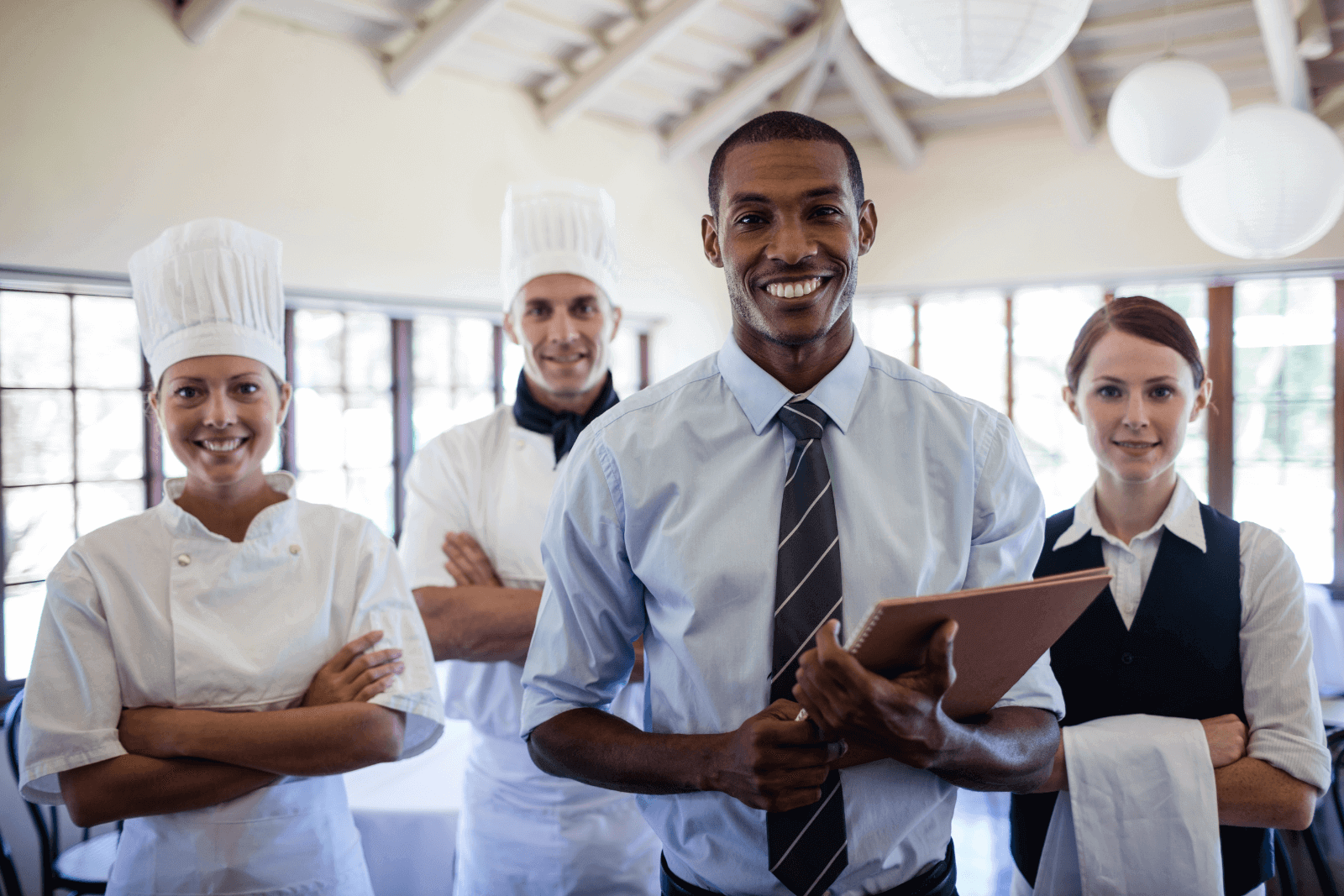It’s 2023, and automation has become integral to our daily lives.
Just remember how much time you save using those self-checkout kiosks in grocery stores or how convenient automated reminders on your phone are.
These tools are designed to replace manual, repetitive and time-consuming tasks.
As such, they are appreciated in many industries, with the restaurant sector being no exception.
The tools we have in mind here range from restaurant reservation software, digital menus, and digital waitlists to automated POS systems, and kitchen displays.
Apart from taking over repetitive tasks, these tools have the potential to completely transform how you run your restaurant—for the better.
Today, we will explore the benefits of restaurant automation and highlight its impact on your restaurant, staff and patrons.
Table of Contents
- Improves Customer Experience
- Increases Efficiency
- Reduces Costs
- Increases Sales
- Provides More Flexibility
- Minimizes Food Waste
- Creates a Competitive Advantage
- Conclusion
Improves Customer Experience
As a restaurant owner, you, without a doubt, know that a happy customer is the key ingredient for a successful restaurant.
And it's not just about serving a delicious meal—it's about ensuring your patrons have a delightful experience from beginning to end.
Automation is essential in achieving this goal, improving customer experience at every step of the journey.
The customer experience often begins before guests even arrive at the restaurant.
It starts from the comfort of their homes, where they can plan their dinner ahead by making reservations.
Thanks to restaurant automation, specifically modern restaurant reservation systems like our Tablein, there's no need for repeat calls or dependence on your restaurant's opening hours.
With Tablein, people can secure a table at any time, day or night, through a user-friendly reservation page like this one:
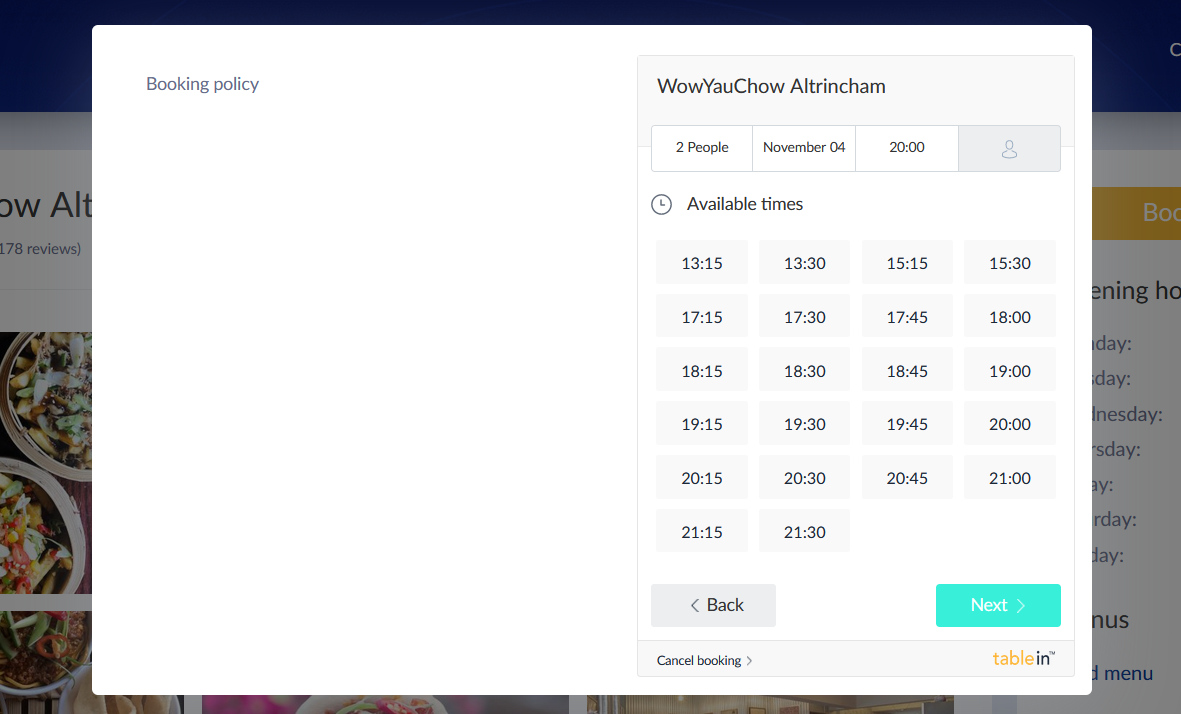
Source: Tablein
They can select the date, time and even preferred area of the restaurant in just a few clicks, which makes the entire reservation process fast and pretty much effortless.
A great start for an excellent experience!
Once guests arrive at your restaurant, automation continues to enhance their experience.
It covers various aspects, from presenting menus and taking orders to delivering precise dishes promptly and ensuring a smooth dining experience.
For example, introducing digital menus through QR codes takes the dining experience to the next level.
These QR codes, thoughtfully placed on the table when guests arrive, speed up the ordering process, because guests don’t have to ask for a menu and wait for the waitperson to come to their table.
An insightful survey by Datassential cited in SmartBrief revealed that 70% of customers appreciate this innovation.
It's a hit with millennials, with 78% expressing their approval, but even boomers find it appealing.
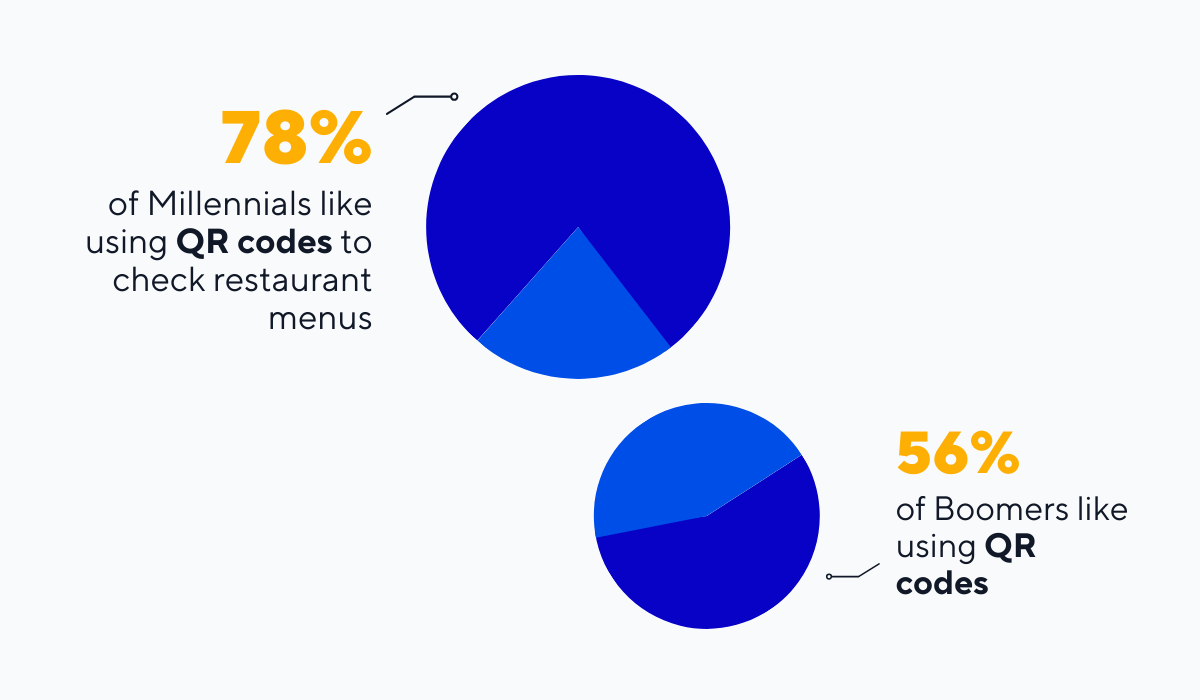
Illustration: Tablein / Data: Datassential cited in SmartBrief
The reason is simple—patrons can explore the menu at their own pace and be ready to place orders immediately when servers approach them.
The convenience of automation should also extend to the payment process, as the same survey showed that more than half of customers desire automated payments.
That makes sense when you consider the frustration of waiting for the bill—it's a sentiment shared by as much as 69% of customers, as found by Pizza Express.
To address this concern, Pizza Express implemented a solution that enables patrons to settle their bills at the table through a user-friendly mobile app, so they don't have to wait for staff to approach them.
According to them, paying the bill now takes less than a minute, making it quick and efficient for customers.
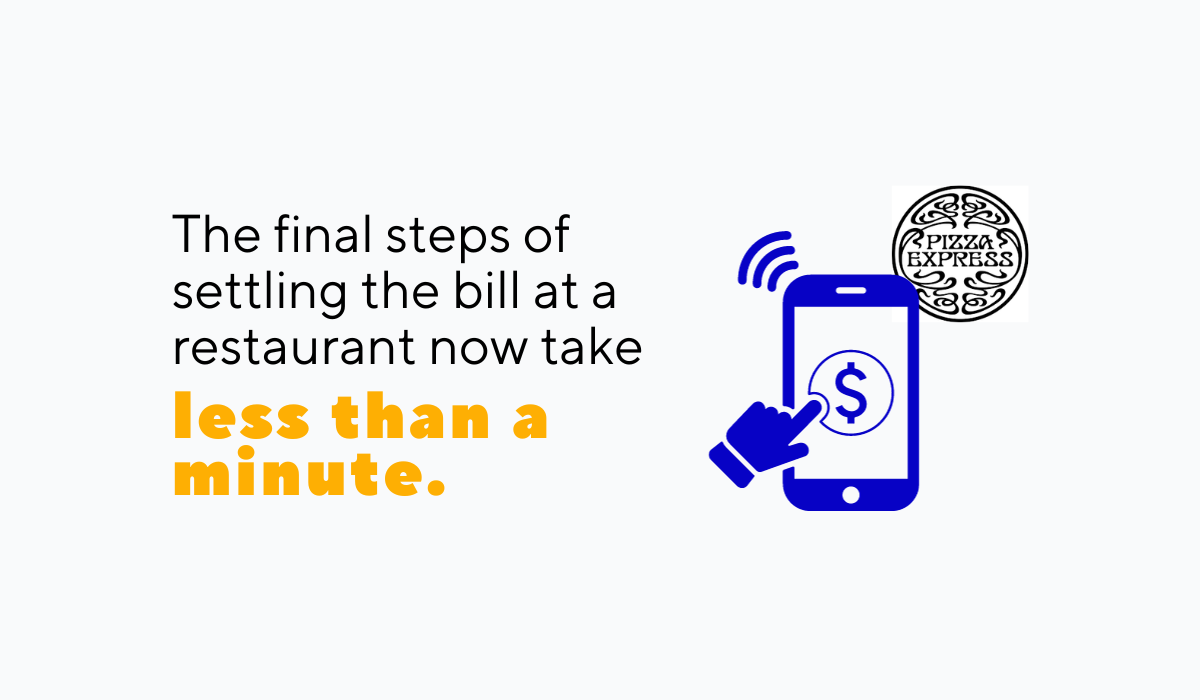
Illustration: Tablein / Data: Irish News
These are just three of the many ways in which restaurant automation significantly improves customer experience and satisfaction.
And with happy customers as your key ingredient, success is undoubtedly on the menu.
Increases Efficiency
In the bustling and fast-paced restaurant environment, where every moment counts, speed is the name of the game.
And restaurant automation thrives on it.
With automation, everything moves faster, from booking reservations to taking orders and chefs whipping up dishes swiftly, thanks to immediate orders and recipes displayed on the kitchen screen.
Think of restaurant automation as a well-coordinated assembly line, where each step smoothly connects to the next.
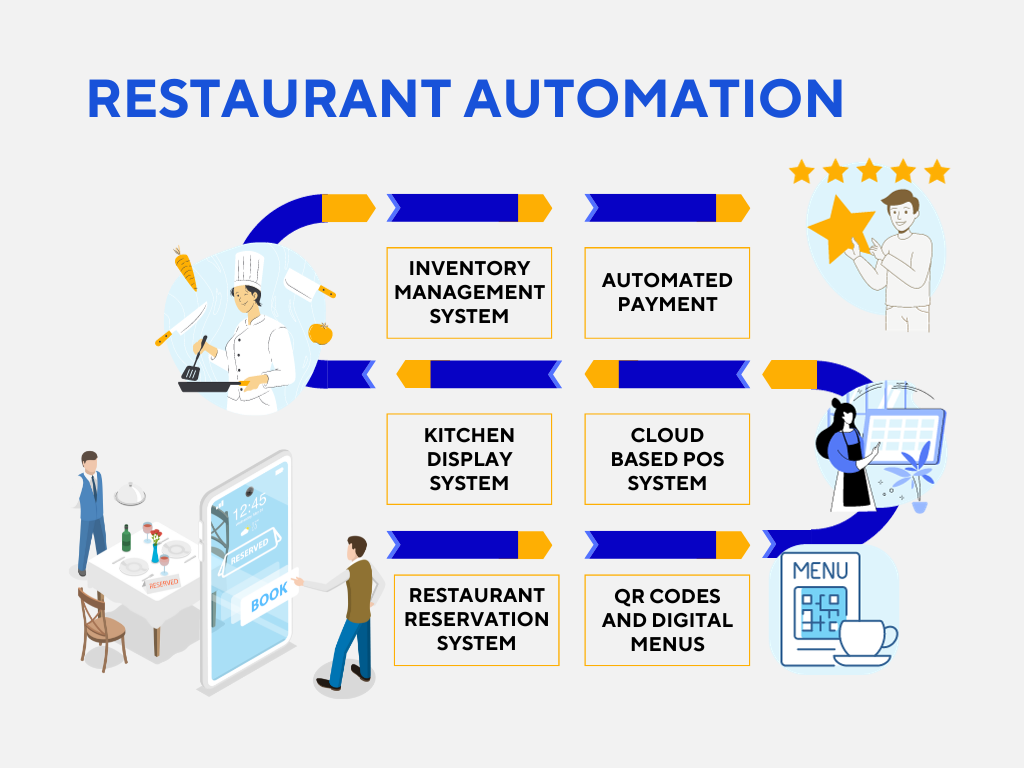
Source: Tablein
It all starts with reservations, as we've discussed above.
Then, as the reservation time arrives and customers are seated, the process smoothly shifts to taking orders.
Digital menus allow customers to check out their choices as soon as they sit down, making the order-taking process faster.
Next, with cloud-based POS systems, waiters no longer need to write down orders and walk to the kitchen. It’s all connected now.
As soon as they enter the order in the POS system, chefs immediately see it and start preparing the meal.
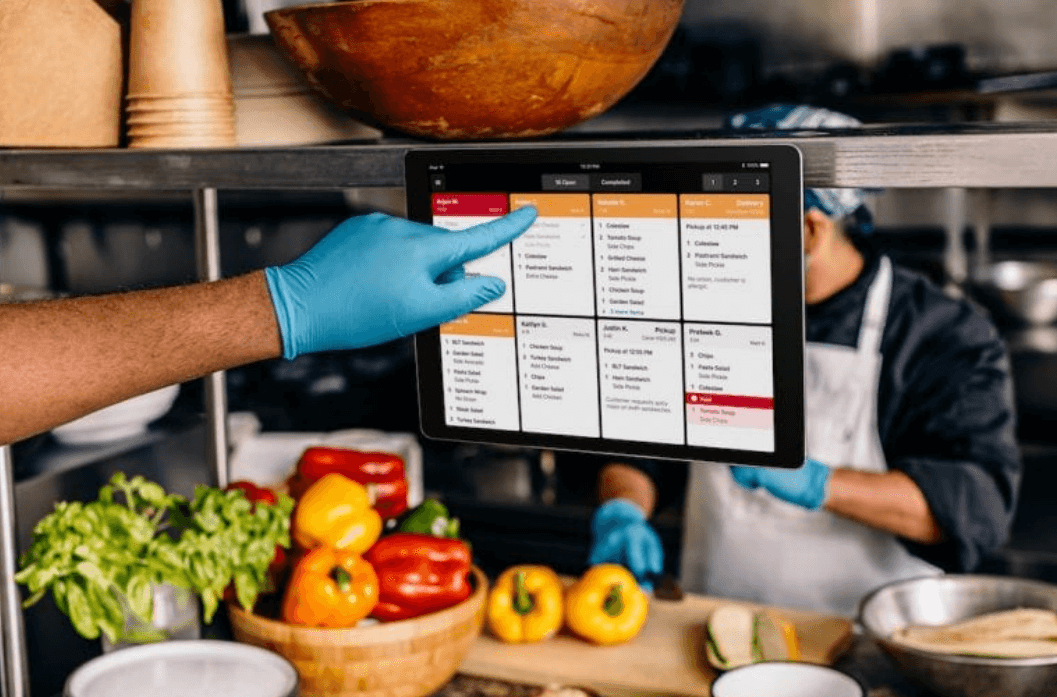
Source: Pymnts
This efficient process ensures customers get their meals faster, and get them hot, leading to a more satisfying dining experience.
Ultimately, those customers also leave faster, and the table is ready for the next guest.
In short, restaurant automation speeds up the entire process and increases table turnover. This lets you accommodate more guests, boosting your restaurant's capacity and revenue.
Moreover, if you automate ordering and add self-ordering into the mix, it further speeds things up.
The whole ordering process becomes faster, resulting in reduced wait times for customers.
For example, customers can swiftly place orders through self-ordering kiosks or, as demonstrated by Panera, a bakery-café fast-food chain, through a dine-in mobile order feature on its app.
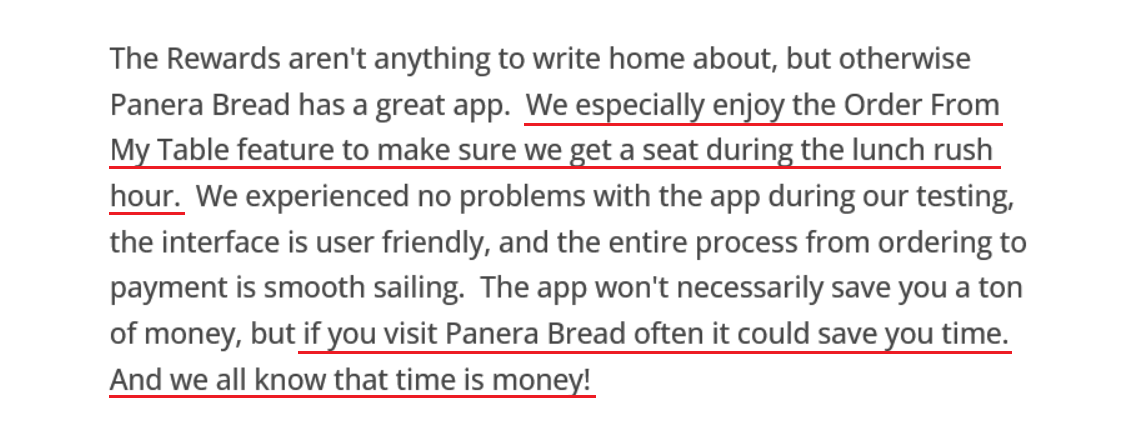
Source: Eat Drink Deals
This approach is handy for fast-food places that handle a high volume of orders daily, as it also ensures quick and efficient service.
However, for restaurants that value personal connections with patrons, a more cautious approach may be wise.
In an interview with Restaurant Development + Design, hospitality consultant Jon Taffer expressed concerns about customer-facing technologies, emphasizing the potential risks to brand reputation and the guest experience.
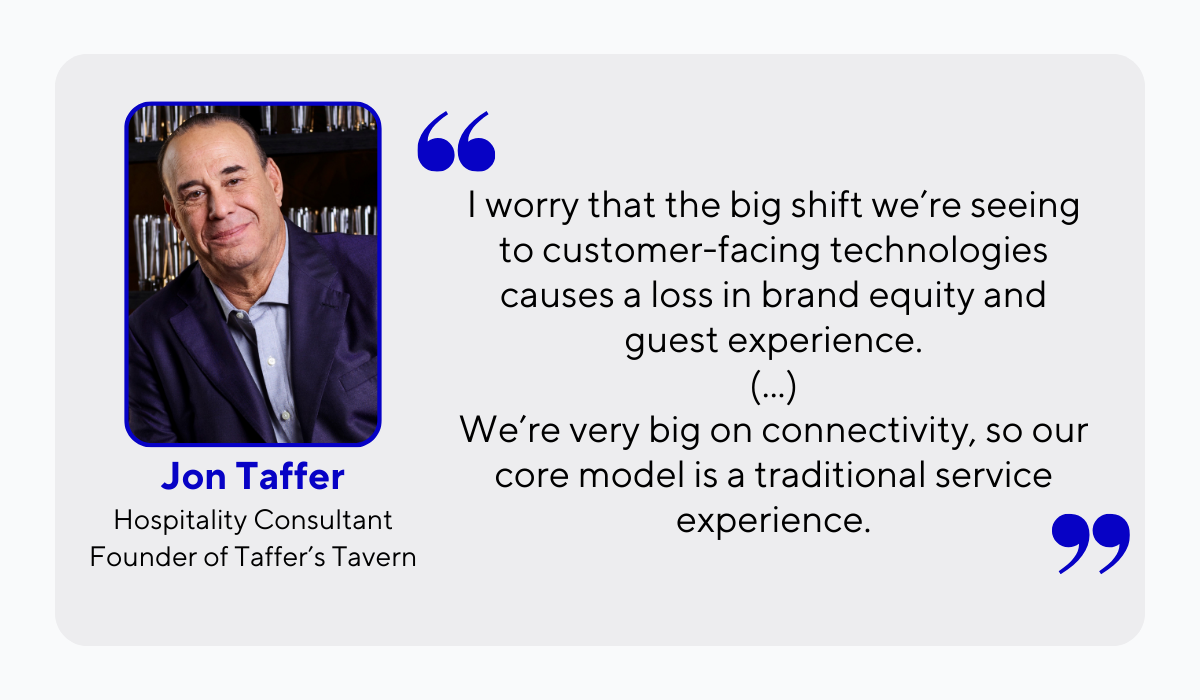
Illustration: Tablein / Data: rd+d
His view on automation underscores the need to strike a balance between automating operations and preserving face-to-face interactions.
It is then that your restaurant can be most efficient and successful.
Reduces Costs
Restaurant automation offers a significant help in cost reduction. Let's break down how it achieves this.
Consider this—when you use reservation software to manage bookings, you don't need a dedicated staff member solely responsible for this task.
This streamlined approach to taking reservations not only improves your efficiency, but also trims your staffing expenses.
But reservation software doesn't just automate bookings.
It also automates reservation reminders and feedback requests.
This means your staff doesn't have to spend valuable time crafting individual emails or making numerous phone calls to confirm or remind guests about reservations.
Instead, restaurant reservation systems will send an email or SMS reminder, like the one in the photo below:
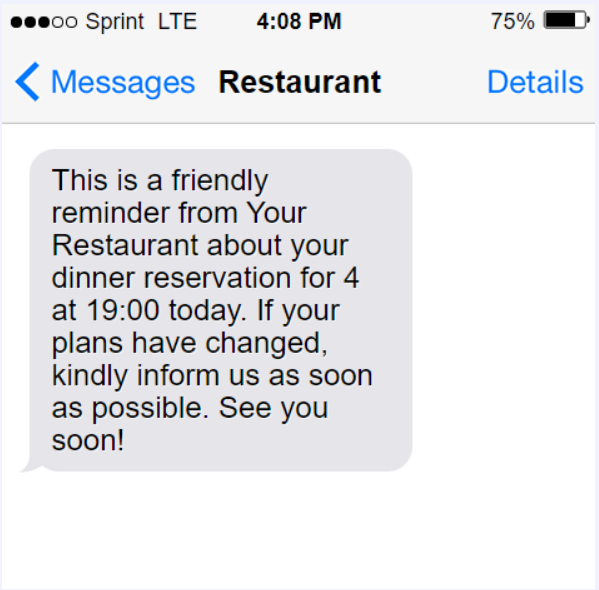
Source: Tablein
What's more, these automated reminders serve as a dual-purpose tool, helping to minimize the frequency of no-shows, a dreadful phenomenon and a costly inconvenience for restaurants.
Take a moment to consider the financial impact of no-shows, and you'll realize just how burdensome they can be.
No-shows inflict a staggering annual cost of approximately £17.59 billion on the hospitality sector.
For restaurants like Nobelhart & Schmutzig in Berlin and Esszimmer in Munich, that means about 6,000 euros in monthly lost sales.
But it's not just about losing money.
It's about wasting food and staff—you still have to pay for this even when diners don't show up.
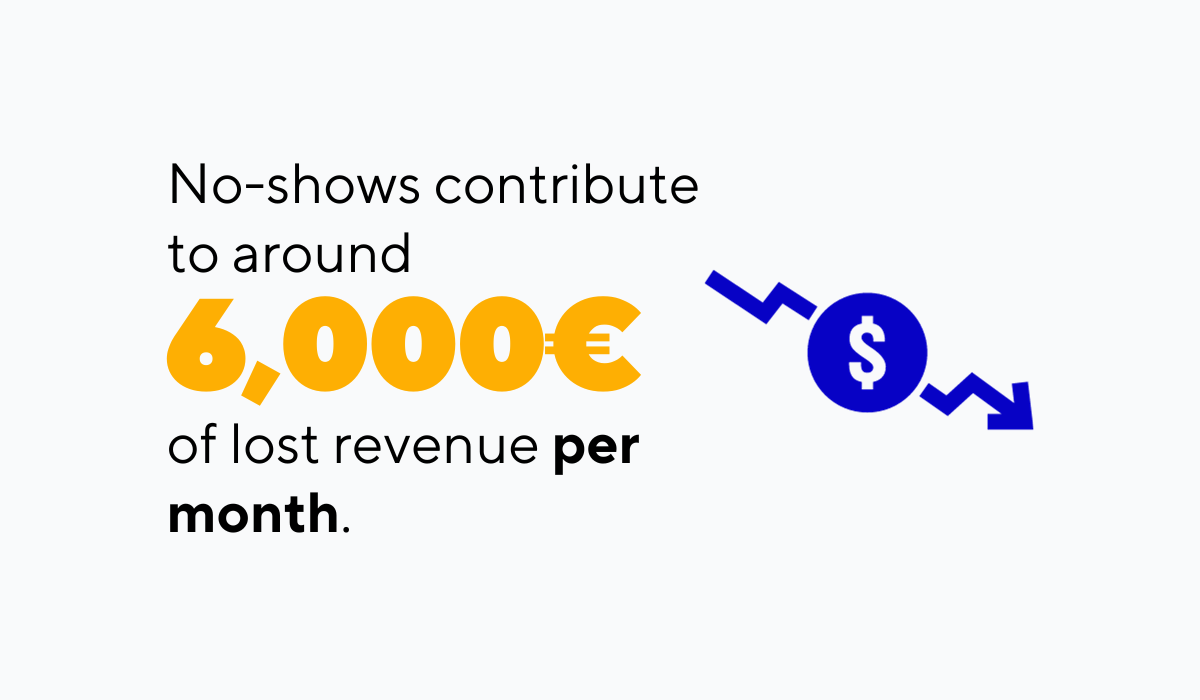
Illustration: Tablein / Data: Aleno
Digital menus are another remarkable cost-saving opportunity brought by automation.
These menus are easily updated, and you don't have to reprint them whenever you change the menu.
According to Menuzen, changes in the menu should be done four times a year so you can easily calculate the savings this automation would bring to your eatery.
Restaurant automation, in essence, paves the way for significant cost reductions in the restaurant industry.
Reducing the need for additional staff, automating customer communication, and cutting printing costs, are just some examples of where automation helps your restaurant thrive while keeping expenses in check.
Increases Sales
Another compelling advantage of restaurant automation lies in its ability to ramp up your sales.
Let's explore the key reasons behind this.
When your customers are not just content but genuinely delighted with their dining experience, they are more likely to become regular patrons and passionate supporters of your restaurant.
We've already discussed how automation contributes to this satisfaction and plays a pivotal role in fostering customer loyalty.
Happy customers keep coming back, and they're also inclined to recommend your restaurant to their friends and family.
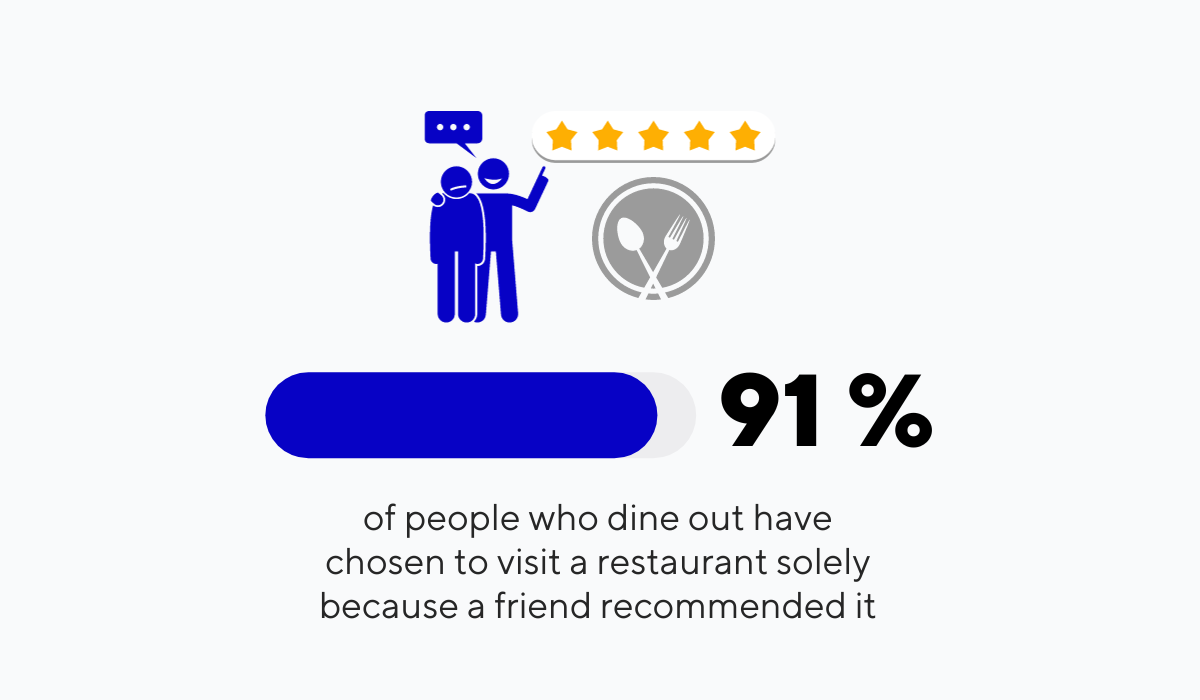
Illustration: Tablein / Data: Touch Bistro
This is of significant consequence, as Touch Bistro's survey reveals that a substantial 91% of restaurant-goers have dined at a restaurant based solely on a friend's recommendation.
On top of that, satisfied customers are more likely to leave glowing reviews on platforms like TripAdvisor, Google, and Yelp. This, too, holds considerable weight.
In fact, a study by Harvard Business School discovered that a mere one-star increase in a Yelp rating could lead to a 5-9% increase in revenue.
So, the power of positive online reviews cannot be underestimated.
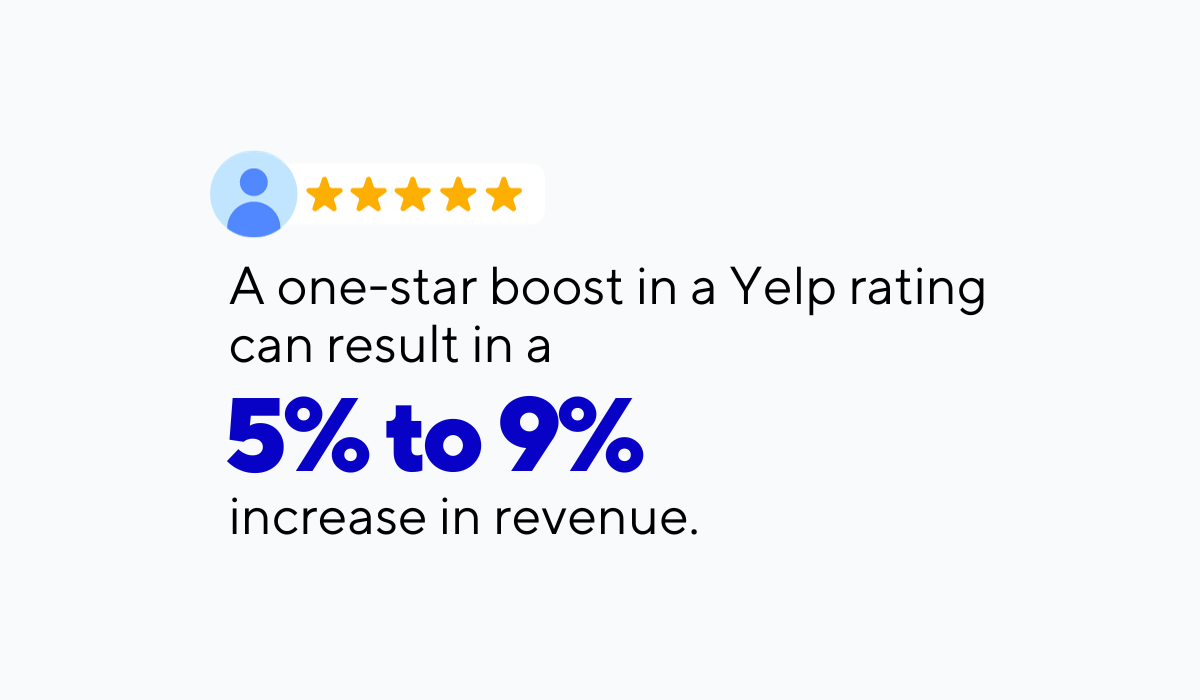
Illustration: Tablein / Data: Harvard Business School
Moreover, the introduction of online reservation systems can be a game-changer in enhancing sales.
For instance, consider the case of Tom Hut, a small restaurant with European cuisine in Australia.
They used to get over 80 phone calls and emails for booking requests each week.
However, they realized that many potential reservations were slipping through the cracks, particularly during busy periods or when the restaurant was closed.
Implementing a reservation system transformed everything, resulting in more reservations and, in turn, increased sales.
In conclusion, restaurant automation not only streamlines operations but also has the potential to elevate your restaurant's sales significantly.
Provides More Flexibility
Restaurant automation brings flexibility to your establishment in different ways, depending on the automation tools you use.
For instance, both reservation systems and cloud-based POS solutions often come with remote management features.
This means that you can access and oversee critical aspects from anywhere with an internet connection.
You can monitor reservations, view sales data, adjust menus, and track staff performance, all in real time.
This capability enables you to make informed decisions and respond promptly to changing circumstances without being physically present at the restaurant.
And sometimes, that is precisely what you need to run your business.
What’s more, restaurant automation tools are inherently flexible as each comes with different modules and features. You can use them all, or leverage just a few of them.
In other words, you can choose which aspects of your restaurant you want to automate.
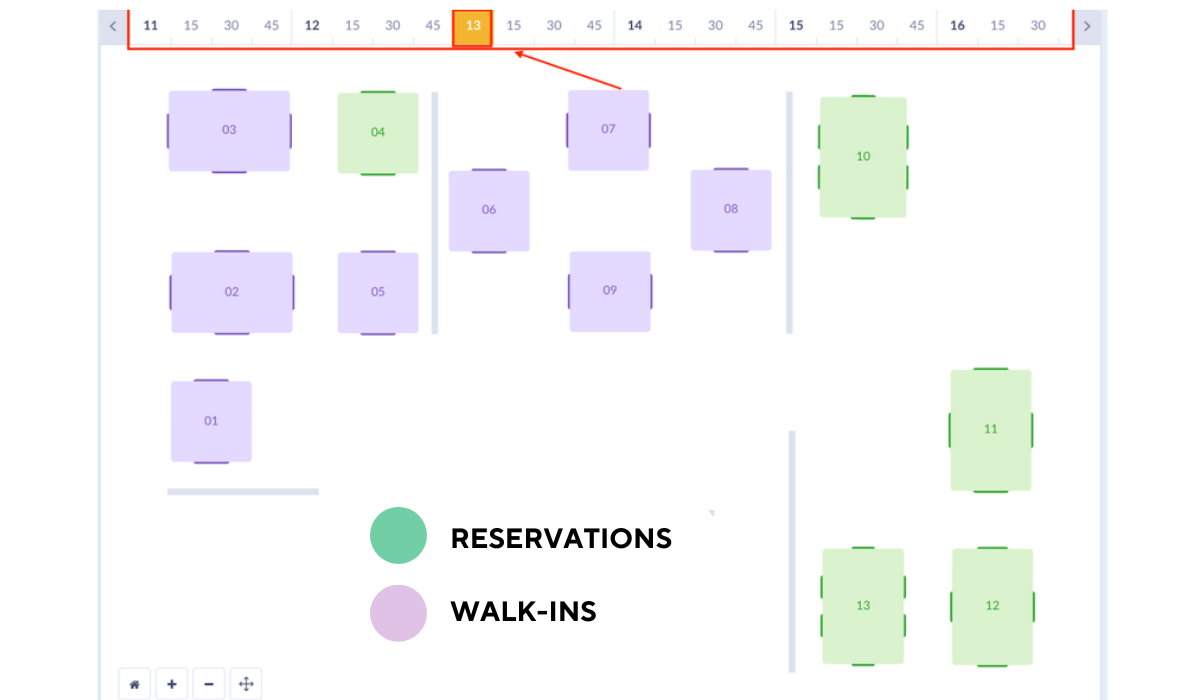
Source: Tablein
Let’s take restaurant reservation software as an example.
If you prefer to accommodate walk-in customers, some reservation systems offer the flexibility to include a walk-in section in your floor plan.
You don’t have to go all-in with automation immediately.
The flexibility of restaurant automation is its beauty—it provides assistance precisely where you need it while allowing you to maintain control over the rest.
Then, as your restaurant grows and you start reaping the benefits of automation, you can tailor and expand features to suit your evolving needs.
This flexibility ensures that your automation aligns with your changing circumstances and remains a valuable asset in your restaurant’s success.
Minimizes Food Waste
Minimizing food waste is a vital benefit of restaurant automation, one that not only benefits restaurants but also the environment.
Food waste is a pressing issue today, with the US alone discarding a staggering 119 billion pounds of food annually, equivalent to 130 billion meals and over $408 billion in wasted resources.
Shockingly, 61% of this food waste, or 66 billion pounds, originates from the commercial food sector, where the restaurant industry plays a substantial role.
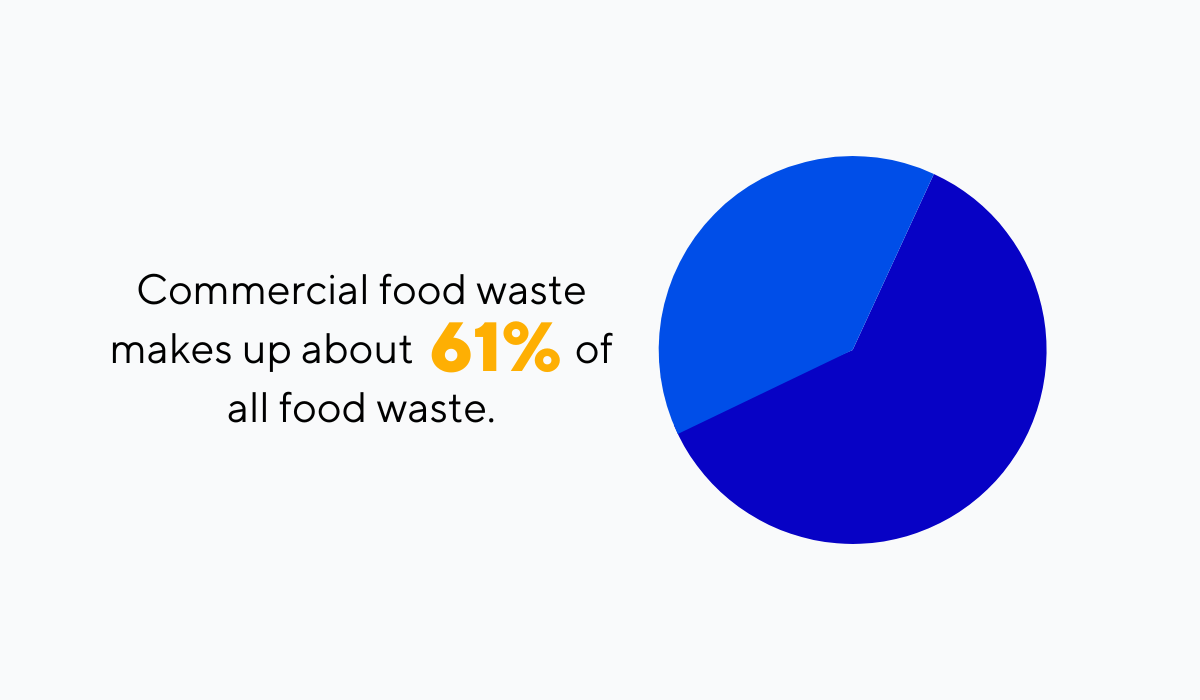
Illustration: Tablein / Data: Feeding America
So, how do restaurant automation tools tackle this problem?
First, consider inventory management systems, which play a pivotal role in avoiding overstocking, and consequently, food waste.
They offer real-time updates on ingredient levels, equipping restaurants with accurate data for making informed decisions about ingredient orders.
This minimizes over-purchasing and ensures that you order just what you need.
Moreover, many inventory systems provide alerts for items nearing their expiration dates.
This feature encourages chefs to prioritize these ingredients, reducing food spoilage and waste.
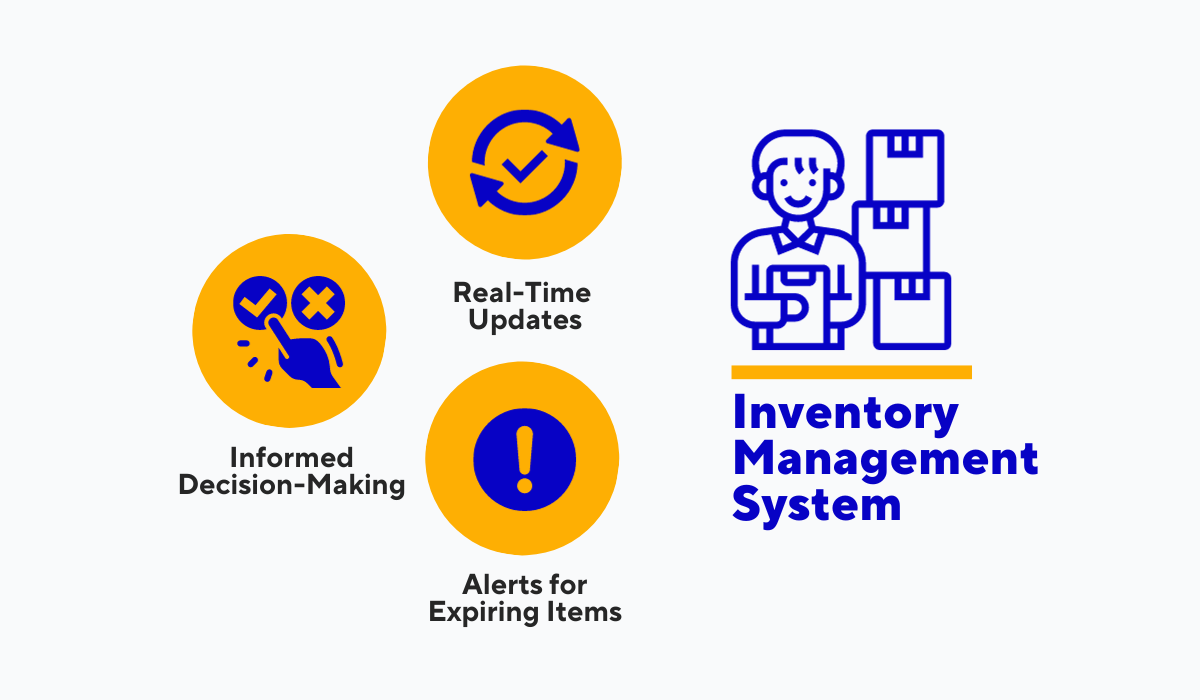
Source: Tablein
Moving on to the second point, automating reservations offers another way to minimize food waste.
When you use reservation systems, you can predict the number of expected customers more accurately.
Knowing the expected number of guests allows you to prepare inventory efficiently and minimize unnecessary food waste.
To summarize, the inventory management system keeps the kitchen well-informed about ingredient levels.
At the same time, reservation systems assist in predicting customer numbers and tailoring meal preparations accordingly.
Together, these automation tools contribute to reducing food waste, which is not only economically beneficial for the restaurant but also environmentally responsible.
Creates a Competitive Advantage
In the competitive landscape of the restaurant industry, gaining a competitive edge is the ultimate goal, and restaurant automation offers a pathway to achieve it.
Efficiency, sustainability, and customer satisfaction—these three pillars are the cornerstones of standing out in the crowded restaurant market.
Embracing restaurant automation brings you all three.
Automation reduces manual tasks, minimizes errors, and accelerates service, resulting in increased efficiency, quicker table turnover, and increased customer satisfaction.
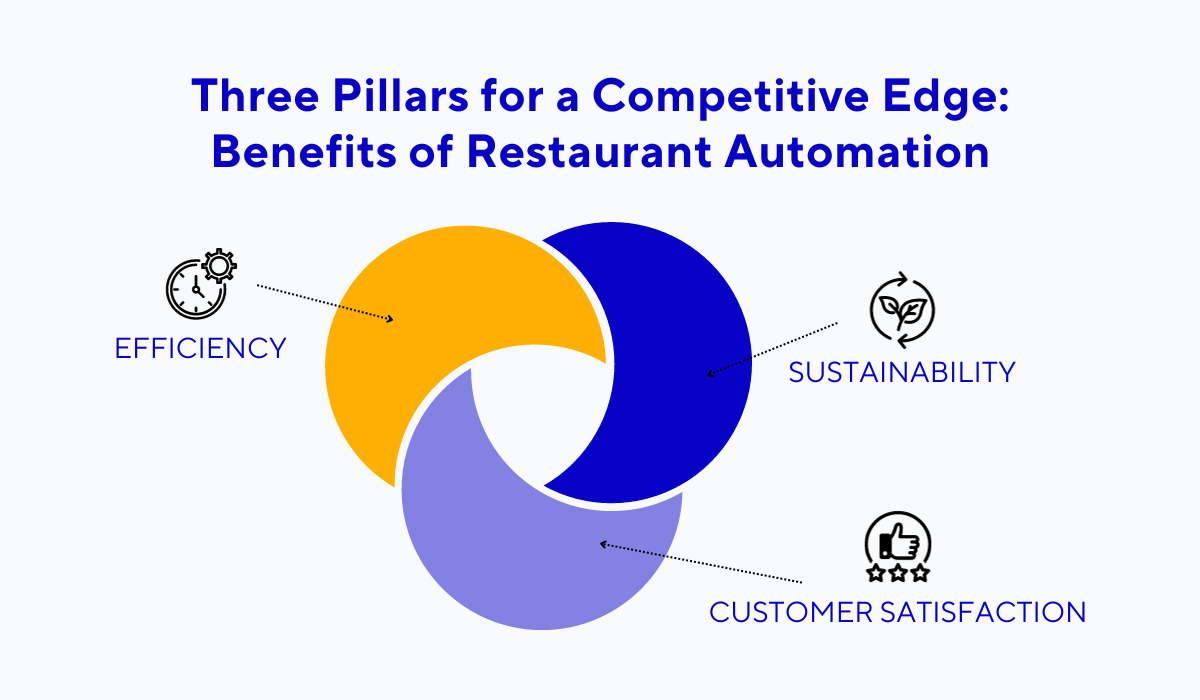
Source: Tablein
Moreover, today's diners prioritize sustainability.
As we mentioned, that can be achieved through minimized food waste, and reduced use of paper, thanks to digital, automated solutions.
Finally, satisfied customers are the lifeblood of any restaurant.
Automation elevates their experience by offering convenient services like online reservations and digital menus.
When patrons can effortlessly book a table, explore menus at their own pace, and enjoy prompt service, they leave content and are more likely to become loyal return customers.
To conclude, restaurant automation is a powerful tool that can make your restaurant stand out, remain competitive, and thrive.
Conclusion
And there you have it. These seven compelling benefits emphasize just how important it is to embrace restaurant automation.
By automating parts of your restaurant operations, you can expect a remarkable transformation in how smoothly everything runs, making both your staff and patrons happier.
This boost in efficiency leads to increased sales and cost savings, which is a clear win-win for your restaurant.
What's more, restaurant automation also works wonders for your customers.
With fast, error-free orders arriving promptly and meals served warm, you'll keep your diners coming back for more, ensuring a steady flow of satisfied guests.
All these advantages combined can truly set your restaurant apart from the competition, making restaurant automation an essential step toward a prosperous future for your establishment.
Get a 30-day Exclusive Trial
As a Tablein blog reader, you’re eligible for an exclusive 30-day free trial to experience our simple reservation solution for your restaurant.
Enter your business email, and we’ll send you all the steps needed to create your account.
Share this
You may also like
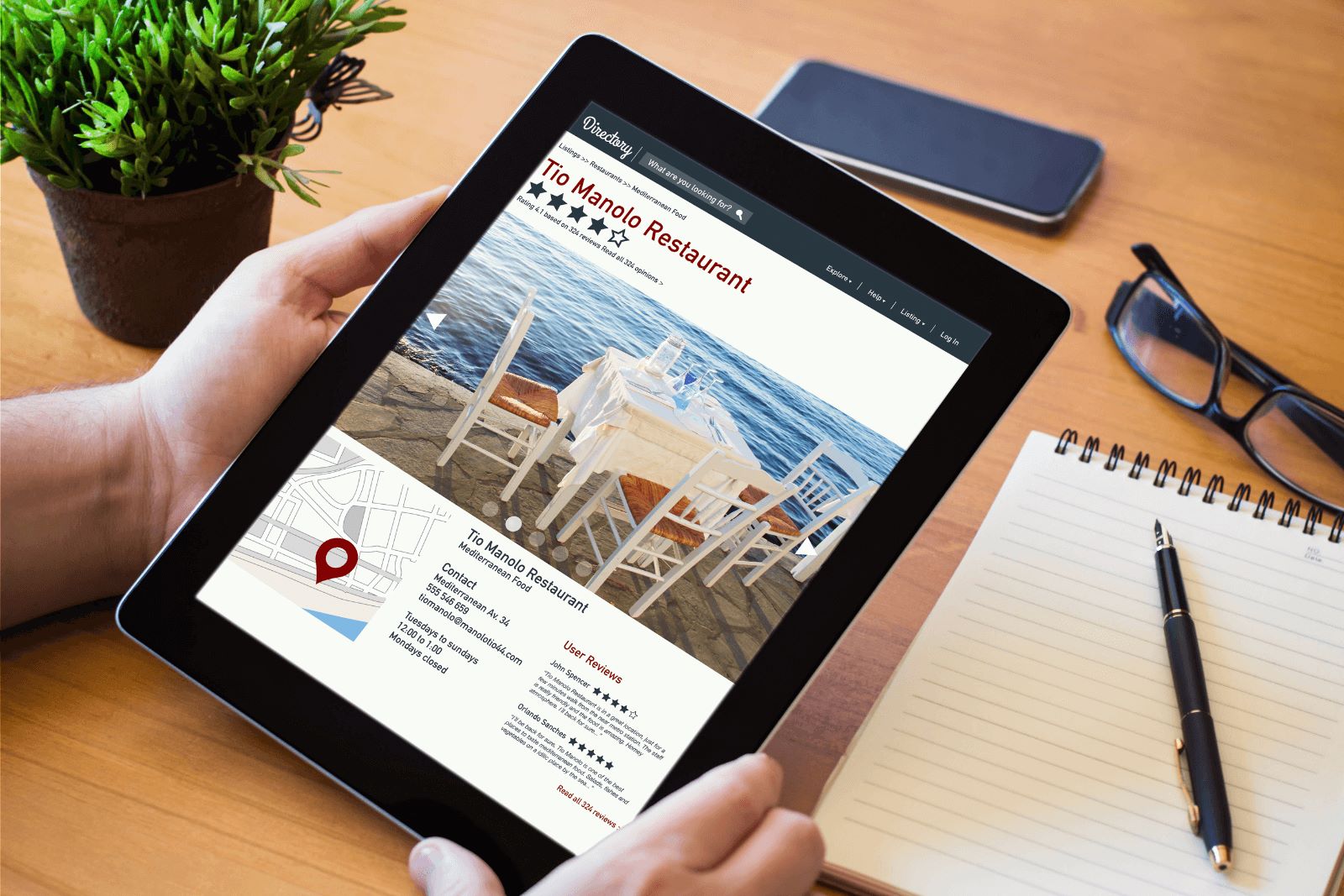
7 Helpful Tips to Make Your Restaurant Stand Out Online

The Full Guide to Restaurant Automation
